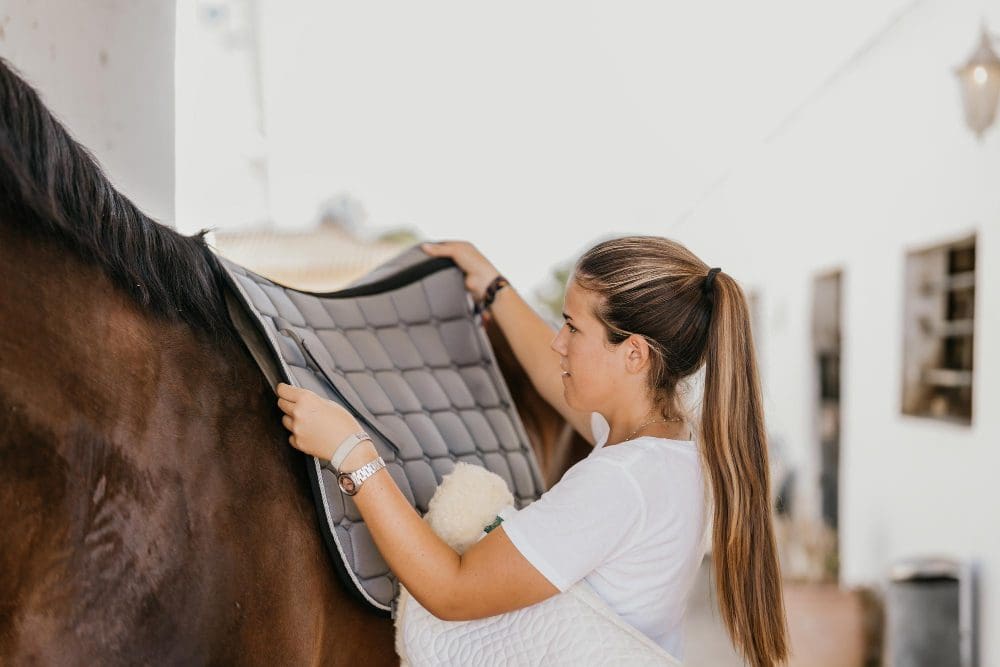**  USA Customers: Enjoy up to $800 Tax Free Imports - Even with Tariffs, we're still better value than US stores! **
USA Customers: Enjoy up to $800 Tax Free Imports - Even with Tariffs, we're still better value than US stores! **
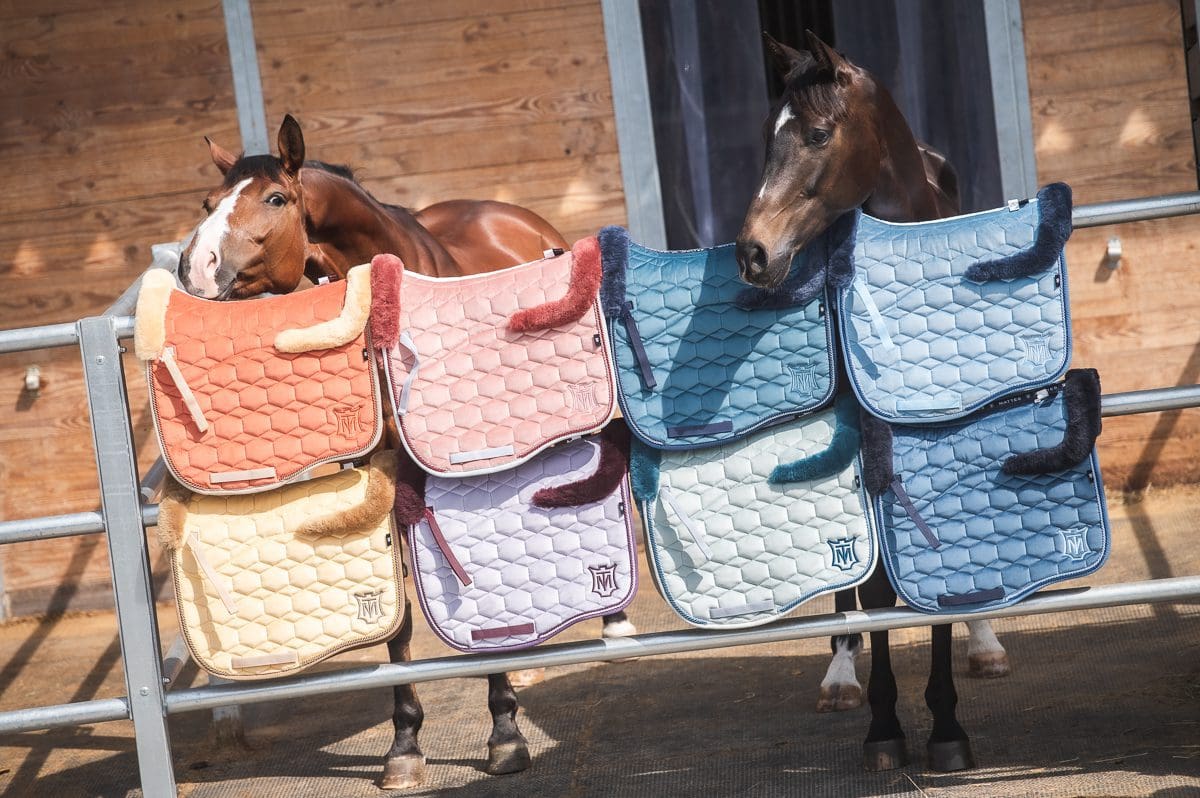
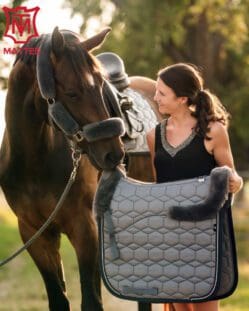
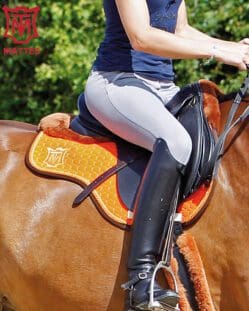
As a retailer specialising in premium Mattes sheepskin saddle pads, numnahs, and half pads, including those designed for Western Saddles, we frequently receive inquiries regarding the best cleaning and maintenance practices to preserve their performance and durability. To address these common queries, we’ve put together a straightforward six-step guide for effortless care and upkeep.
A good quality saddle pad is an investment and whilst many customers buy pads because they look good or are the latest fashion, remember that the top brands have carefully designed their pads primarily to fit and protect your horse’s back, acting as a barrier between the horse hair, sweat, and other detritus, dispelled by your horse when they are being ridden. Keeping your pads clean, will not only extend the life of your pad but will ensure your horse is always comfortable, and free from harmful bacteria and chafing which can ultimately lead to saddle sores or skin conditions.
This step by step guide applies to all types of saddle pad, numnah, half pad, and western pad, both with or without sheepskin
Give your saddle pad or numnah some breathing room by allowing it to air dry for at least 24 hours, ensuring it’s completely moisture-free before the next use. Working on a dry pad is much easier than one that is damp with sweat.
Begin the cleaning process by giving your pad a thorough once-over with a soft rubber or flat rubber curry comb in a circular motion so as to loosen the grime, eliminating any stubborn hairs and debris that may have accumulated during your rides. Repeat this procedure until you have removed as much of the loose hair and dirt as possible.
Lay your saddle pad flat and continue the deep cleaning process with a vacuum. Utilize the nozzle attachment to effectively remove dirt and dust from both the top and underside. Some vacuums even come equipped with specialized mini roller attachments, offering an extra level of cleaning prowess.
Before placing your saddle pad in the washing machine, make sure your have fastened or removed any velco straps, together with any corrective shims or saddle fix system to prevent damage during the wash cycle and that you have consulted the manufacturer’s instructions to confirm it’s machine-washable status. The majority of high quality pads are designed to be machine washed.
When it’s time to launder, turn your pad inside out and place it in the washing machine. Opt for a gentle cycle with a maximum temperature of 30 degrees. Avoid using regular detergent, as it contains harsh bleaching agents that can fade colors and compromise the fabric and stitching. Instead, consider using a mild detergent like MELP, specially formulated by Mattes to effectively remove dirt from both the pad and sheepskin without causing damage.
Once the washing cycle is complete, promptly remove the pad and hang it over a line or pole to air dry, avoiding direct sunlight. Take care to gently reshape the pad as it dries, ensuring it retains its original form and functionality for future rides.
Once the pad is completely dry you should brush the sheepskin with a sheepskin or dog grooming brush to restore the softness and fluff to the wool fibres. The next step is to, carry out a visual check to make sure the shape hasn’t changed, there is no visible damage, and it is still fit for purpose. If the pad is an old one and looks thin or threadbare it may be time to replace it.
At Pink Equine, we take pride in crafting high-quality horse tack with the utmost care and attention to detail. We hold ourselves to rigorous standards, ensuring that every product leaving our company meets our stringent criteria for excellence. We believe in providing our customers with only the best, which is why we are selective about the brands we recommend and sell.
Renowned for their superior craftsmanship and commitment to equine comfort, Mattes produces custom-made saddle pads numnahs and half pads of exceptional quality. These pads are crafted from carefully selected materials designed to benefit the horse, offering unparalleled comfort and support.
What sets Mattes apart is their dedication to precision fit. Each saddle pad is expertly designed to conform perfectly to a horse’s back, minimizing pressure points and maximizing comfort. We understand the significance of a well-fitted saddle pad in promoting your horse’s health and well-being, which is why we endorse Mattes products wholeheartedly.
At Pink Equine, we prioritise customer satisfaction and strive to offer only the finest products that meet our exacting standards. With Mattes, you’re investing in quality, durability, and, above all, the comfort and happiness of your horse.
In addition to selling custom horse tack, we’re all about fostering community spirit in two exciting ways! Dive into our featured articles, like this one, for helpful tips and insights. Plus, join our Pink Equine club for free! Get in on exclusive competitions, stay up-to-date with our newsletter, be the first to access new ranges, and enjoy special discounts. Join the fun – become a member today!
Taking care of your high-quality saddle pad is essential to maintain its performance and longevity. While most steps in this guide on how to clean saddle pads are straightforward, it’s crucial to ensure you preserve your investment for optimal rider and horse performance. If you have any additional questions or concerns not addressed in our cleaning guide, we’ve provided answers to common queries below. Feel free to reach out if you need further assistance—we’re here to help!
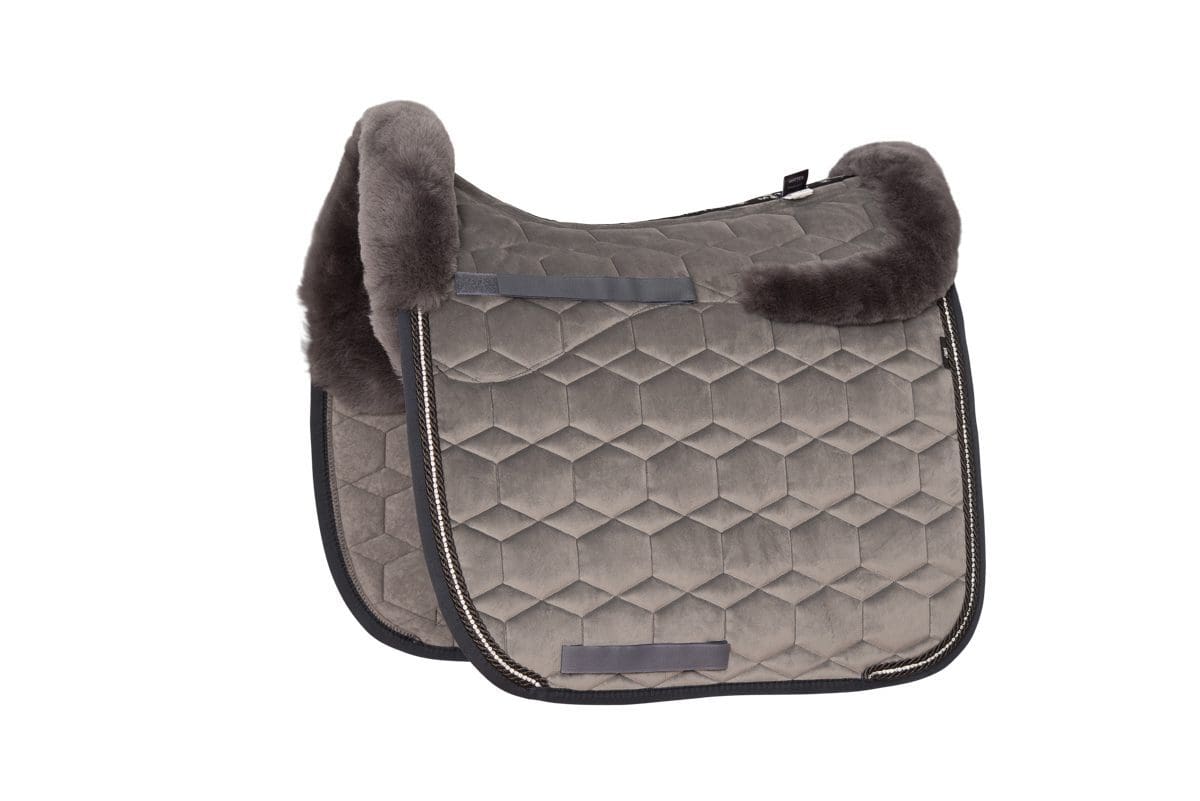
Yes, good quality saddle pads can be dried in the dryer on a cool setting. Once the washing machine cycle has finished remove your pad immediately to start the drying process. Lambskin items can also be dried on a cool or cold setting (max 30°C setting) in the tumble dryer.
Alternatively, you can leave your pad to air dry by hanging it over a fence rail or better still a clothes horse, or drying rack either indoors or outdoors, but never in direct sunlight as this will cause your pad to fade and even cause stiffness or shrinkage. Don’t try air drying your pad upside down or on its side, as this will damage the shape. Drying times will vary according to the thickness and quality of your saddle pad, but it is recommended to gently reshape the pad as it drys. Check the label for specific care instructions.
Many of the Mattes Western Saddle Pads have a leather side protection strip on them. You should wipe the leather off with a damp cloth and then apply a good quality leather conditioner, being careful not to get it on the cloth material of the pad.
You should avoid any wool detergent, soap, or bleach products as these will damage your fleece/sheepskin saddle pad. Mattes have developed their own detergent called MELP designed to clean sheepskin products and in particular Merino wool that is used in Mattes sheepskin saddle pads. This biodegradable detergent re-greases and restores the elasticity of natural wool and hide, maintaining the hide as well as the wool. If your saddle pad contains natural sheepskin it is worth investing in Mattes Liquid MELP.
Hand-washing saddle pads is possible without a washing machine. If you decide to hand wash your saddle pad, you can use a bath or tub filled with warm water and leave your pad to soak in a mild ph-neutral detergent. (wool and felt pads should only be washed in water as the soap can become ingrained in the fibres). Make sure you have rinsed the pad until the water runs clear. Special care should be taken when washing nylon or leather items to prevent damage to the material.
Yes, most saddle pads can be washed. Ensure you follow the manufacturer’s instructions or guidelines when washing, as some fabrics are more delicate than others and require special care. Use a mild ph-neutral detergent and consider using a protective fabric softener to help keep the fabric looking new. Air dry the pad to ensure it doesn’t shrink.
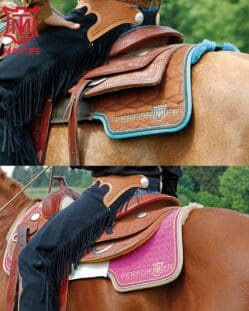
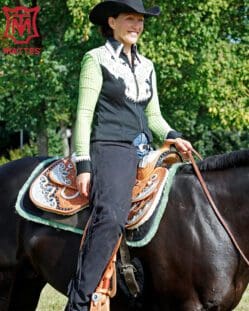
Yes, you can wash Western Saddle Pads, but the method depends on the type of western pad you own and the material it is made from. Large thick western pads, may not fit into a washing machine and will need to be hand washed. Whilst Western saddle pads are generally bigger than English ones, the Mattes Rio Pecos western saddle pad features a removable sheepskin, allowing you to wash it separately, and can generally be washed in a washing machine. There are some materials such as wool felt, memory foam, or gel pads which should only be hand washed as they will be damaged in a washer.
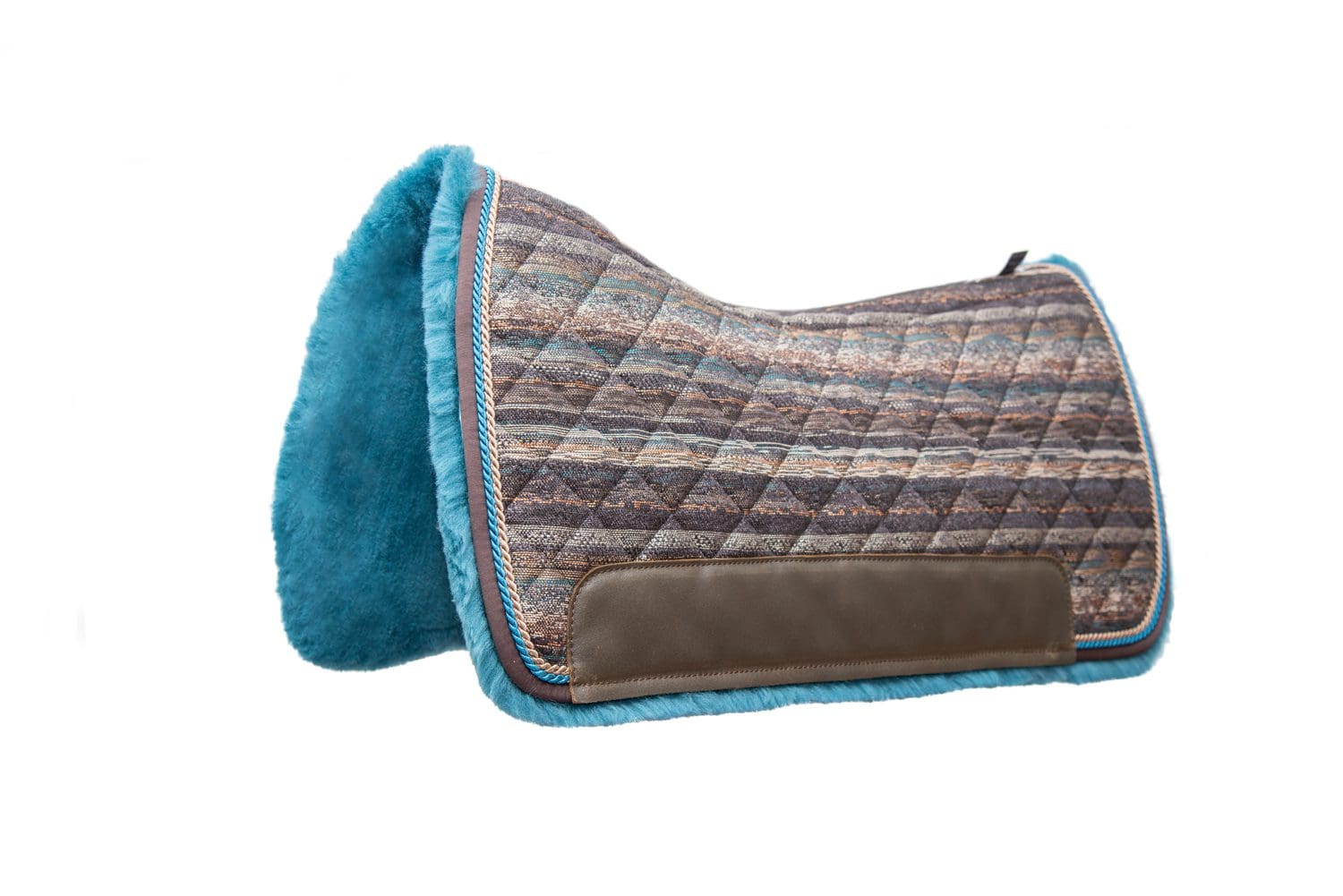
Yes in fact this is recommended, although you should always read the manufacturer’s instructions and take care not to overload your machine and make sure you use a 30°C wash cycle with normal spin and the “Extra water” option if you have it. If not then open the detergent drawer and add an extra three or four litres of water.
Yes, pressure washing your saddle pad is possible. However, it is important to check the washing instructions prior to cleaning, as some materials may not be suitable for this type of cleaning. Additionally, ensure that a mild ph neutral detergent, appropriate for the material, is used in conjunction with the pressure washer. If you haven’t got access to a pressure washer a garden hose with a spray head attachment will also work.
Wash white saddle pads with mild detergent and cold water, then rinse thoroughly. For a deep clean, add a teaspoon of baking soda to the wash cycle. Line dry or tumble dry on low heat. To remove stubborn stains, use a gentle brush with an approved cleaner and never apply harsh chemicals which could damage the fabric.
The answer really depends on a couple of factors, how many pads you own and how often you ride. If you are riding every week and can rotate pads, ideally you should be washing your pad after every ride or at least once a week, to remove sweat and dirt.
Allowing mud, sweat, and bacteria to remain on the saddle pad will cause it to break down prematurely and can lead to skin irritation and discomfort. Cleaning immediately is not only good for your horse’s health but also extends the life of your saddle pad. In fact, Mattes a top saddle pad manufacturer encourage all customers to wash their saddle pads regularly as they actually benefit from a routine washing regime. Washing on a regular basis not only removes unwanted detritus, but also the sebum and ammonia content, which if left, can in actual fact break down sheepskin and wool fibers.
Finally, to protect your investment saddle pads should be stored in a cool, dry clean environment away from direct sunlight to keep them in top condition and lasting for years. Avoid folding or rolling the pad, instead hang the pad on a saddle rack or on a hanger, or place it flat on a shelf.
